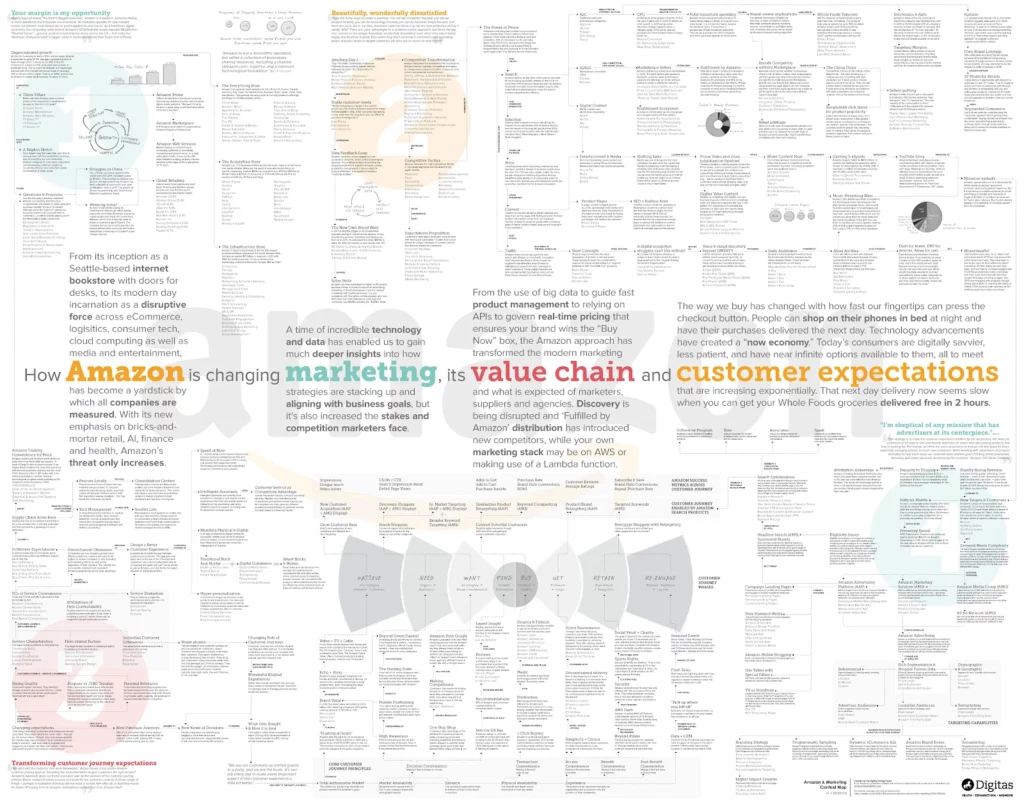For any business, online or offline, customer experience matters the most!
But how often do we see these businesses breaking their strategies to get the CX right?
Do you know that 86% of buyers would be willing to pay more just for a great customer experience? Yes!
I believe 2023 will be all about integrating sales, marketing, and customer experience into one single function. And the integration of customer journey mapping and market research will play a pivotal role in this. Let’s find out how!
What is customer journey mapping?
Technically, customer journey mapping is a visual representation of the steps a customer would take in interacting with any business. It helps with understanding the customer’s experience and helps businesses identify areas for improvement.
The process involves mapping out all the touchpoints a customer would have with any business — right from knowing about the brand to browsing through the products/ services, reviewing, making the final purchase, and moving to post-purchase support.
The aim is to identify the key points and pain points that may trouble the customer and force them to leave without making a purchase.
Benefits of customer journey mapping
77% of businesses believe CX is a key competitive differentiator. Mapping the customer journey can help in:
- Understanding the customer experience from beginning to end
- Developing strategies to increase the overall ROI
- Understanding customers’ emotions and motivations during the buying journey
- Developing a customer-centric business strategy
- Making data-driven decisions
What is market research?
By definition, market research is the process of gathering, analyzing, and interpreting any information about a product, service, or market and its potential customer base. It delves into the psychology, characteristics, spending behaviors, location, needs, preferences, and context of the business’s target market, the industry, and the competitors to watch out for.
This may mean you gather information, conduct market segmentation, understand your differentiation and unique position in the market, drive advertising campaigns and branding efforts to determine what offerings your customers like, and make sure it’s a win-win for both the business and your target audience.
Benefits of market research
The global revenue of the market research industry exceeded $76.4bn in 2021. This is projected to increase more in the coming years. An effective market research strategy can help in:
- Understanding the target market
- Diving deep into customers’ mindset
- Evaluating business performance
- Guaranteeing better sales
- Improving customer feedback and experience
Integration of customer journey mapping and market research
Market research can help businesses with data that can be used to validate their customer journey mapping findings. When this process is combined with customer journey mapping, it can provide businesses with a more in-depth understanding of their customers, enabling them to make data-driven decisions that improve customer satisfaction and loyalty.
Understanding the customer journey
This is the first step towards the integration of customer journey mapping and market research. It involves mapping out all the touchpoints a customer has with a business and identifying their emotions and motivations during each touchpoint.
Identifying key touchpoints and pain points
Once the customer journey has been mapped out, the next step is to identify key touchpoints and pain points. Key touchpoints indicate the points where a customer interacts the most with your brand. Pain points indicate the points where a customer experiences the most frustration or disappointment.
ALSO READ: Improving customer experience through survey panels
Collecting customer feedback and data
Once key points and pain points have been identified, the next step involves collecting customer feedback via conducting market research. The idea is to gather data and information via these studies and make informed decisions to improve the areas where your brand could be lagging.
Validating the findings
The final step involves incorporating these findings into your overall marketing and customer experience design strategy. This may include conducting A/B tests, using different market segments, conducting more studies, etc.
Proven case studies
The estimated global market value of customer journey analytics is projected to be $46.68bn by 2030, with a CAGR of 18.8% from 2020. Several brands worldwide have started integrating their UX journey mapping in research to improve their CX strategy. Here are some of the notable brands who have aced in this.
Starbucks Corporation — World’s largest coffeehouse chain
Remember when the coffee giant stepped into the market and brought a revolutionary change in the coffee industry? Yes, it didn’t happen overnight!
Starbucks’ market segmentation strategy includes demographical, psychological, and geographical segmentation. The major target groups are people aged 25-40 with high income and youngsters aged 18-24 from rich families.
The US-based brand implemented a comprehensive customer journey mapping program that not only identified key touchpoints but also collected data from customers through various channels such as surveys, focus groups, and social media monitoring.
This helped them in making data-driven decisions to improve the customer experience and increase customer loyalty. They introduced Starbucks Rewards and Starbucks Cards as a part of their customer loyalty program.
As a result, the brand saw a 15% increase in customer loyalty — resulting in increased sales, customer retention, and a stronger brand image.
Amazon
The e-commerce giant would be another perfect example to study. Their customer journey map is one of the most complex yet proven. This brand decided to focus on brand sentiment, positive reputation, and building trust — making them one of the sought-after brands for customer-centricity and customer service.
They integrated customer journey mapping and market research to understand customer behavior and preferences — pushing different categories of products to different market segments depending on their age, location, and spending habits.
This has not only increased customer satisfaction and loyalty but has also helped the company achieve sustainable growth.
Integrating customer journey mapping and market research — how to do this right?
Create a customer-centric mindset
Most of the brands focus on their goals and objectives rather than focusing on their customers and their experiences. By putting their customers first, businesses can gain a better understanding of their needs and preferences, ultimately leading to improved customer satisfaction.
Collaborate with different stakeholders
Often brands miss out on the fact that a great customer experience comes from great teamwork — and not just from great sales or marketing, or customer support. By collaborating, you are ensuring that your brand, as a whole, is taking a comprehensive approach and fulfilling the invisible gaps.
ALSO READ: How to design the best user research plan?
Invest in technology
According to a study, 61% of organizations are pro-analytics. If you are not investing in technology or tools that support customer journey mapping and market research, you should start right away. This includes tools for customer feedback and survey data collection, data analysis, and customer behavior tracking. By investing in these tools, companies can collect and analyze customer data more efficiently and make data-driven decisions.
Analyze and improve
In the end, it’s all about doing, redoing, learning, implementing, and gathering data.
Market research is not a one-time thing — neither is mapping the customer journey. It will constantly evolve according to market conditions. As a brand, practice this on a regular basis. Look out for customer feedback, understand their pain points, and make changes based on the insights gathered.
TL;DR
It’s a highly competitive business world we work in. Every brand is trying to offer a seamless and enjoyable customer experience, and their success rate depends on how well they understand and meet their customers’ demands. If you fail in this, there’s no guarantee of a way back.
To provide a great customer experience, focus on building a solid customer journey map and integrate it with your market research strategy. Find and gather data that can help you improve and beat your competition.
If you find this challenging, follow our guide to improving customer experience through market research.


